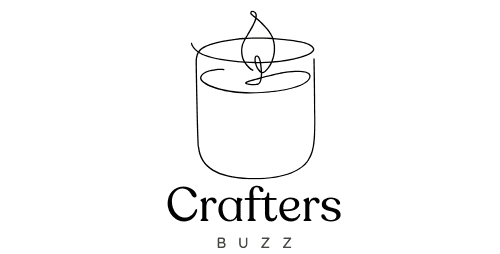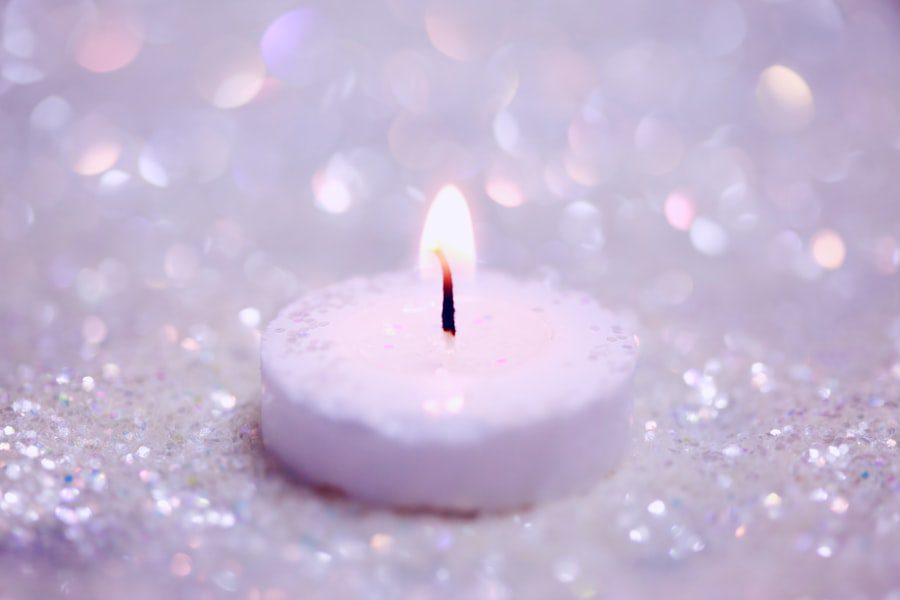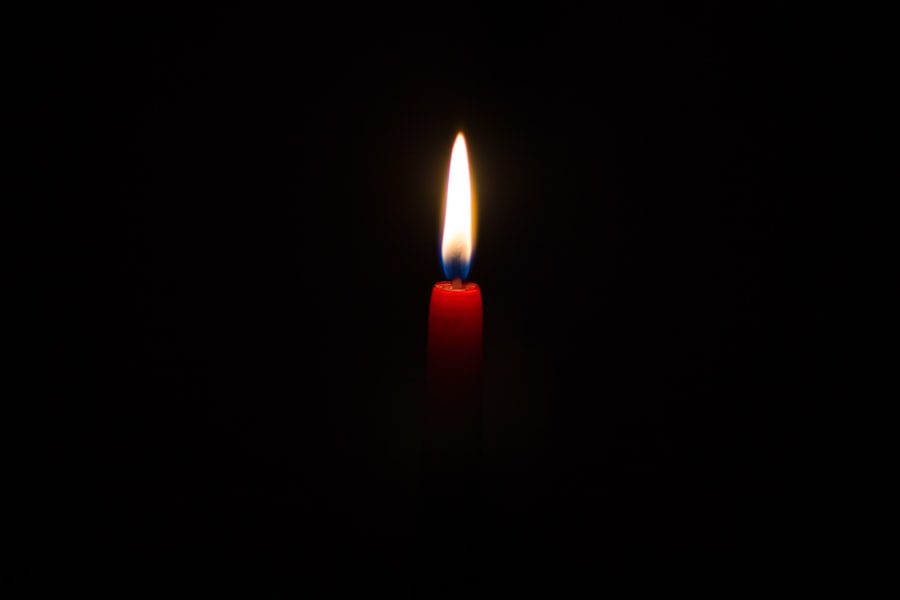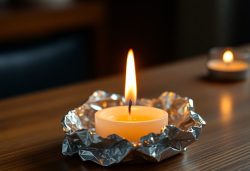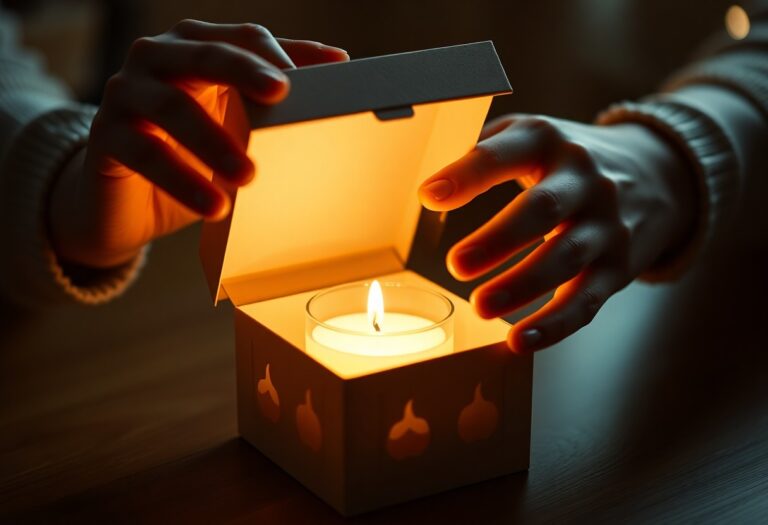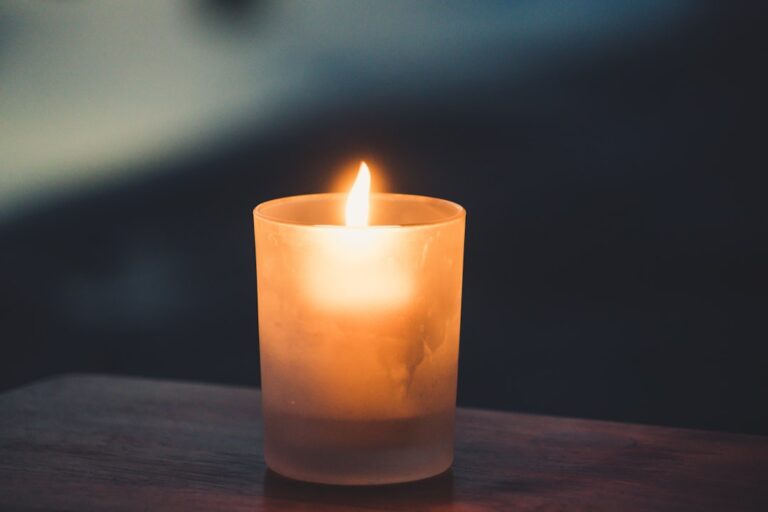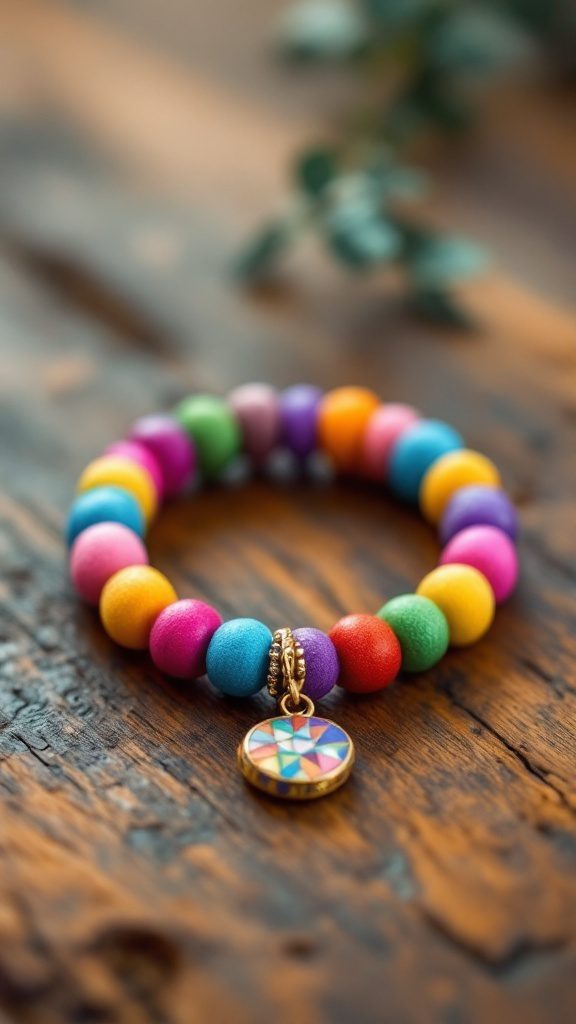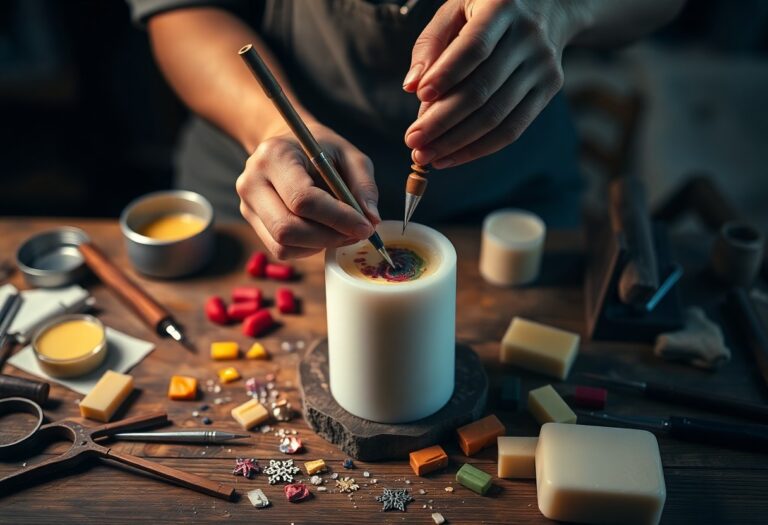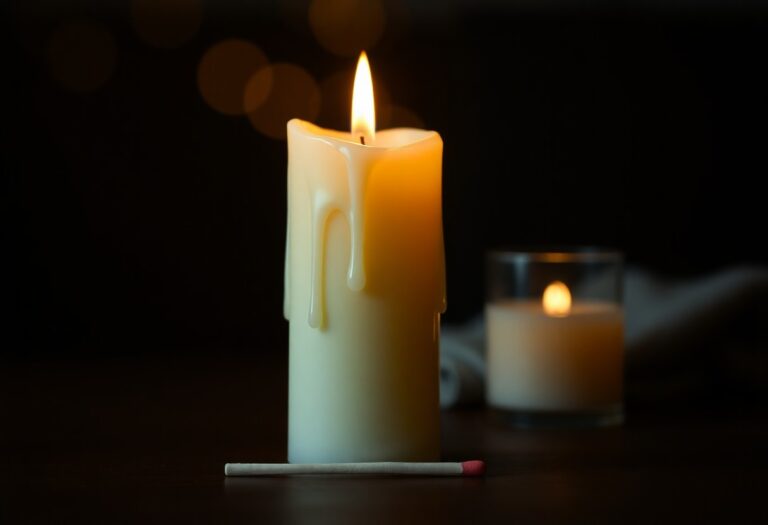What to do with leftover wax from candles that have burned down.
One of the most practical and rewarding ways to repurpose leftover candle wax is to melt it down and create new candles. This process not only minimizes waste but also allows you to customize your candles according to your preferences. To begin, gather all the leftover wax from various candles, ensuring that you remove any wicks or debris.
You can use a double boiler or a makeshift one by placing a heat-safe container in a pot of simmering water. As the wax melts, it will become a liquid that can be poured into molds or containers of your choice. When reusing wax, consider mixing different colors and scents to create unique combinations.
For instance, if you have remnants of vanilla and lavender candles, blending these can yield a soothing aroma that is both comforting and refreshing. Additionally, you can add new fragrance oils or essential oils to enhance the scent profile of your new candle. Once the wax is melted and mixed, pour it into molds or jars, insert a new wick, and allow it to cool completely.
This not only gives new life to old wax but also provides an opportunity to experiment with different shapes and sizes.
Create Wax Melts for Scented Warmers
Another innovative way to utilize leftover wax is by transforming it into wax melts for scented warmers. Wax melts are small, fragrant pieces of wax that can be melted in a warmer to release their scent without the need for a wick. This method is particularly appealing for those who enjoy strong fragrances but prefer not to burn candles.
To create wax melts, start by collecting your leftover wax and melting it down as previously described. Once melted, you can add fragrance oils to achieve your desired scent intensity. After mixing in the fragrance, pour the melted wax into silicone molds or ice cube trays.
These molds come in various shapes and sizes, allowing you to create fun and decorative melts that can enhance your home’s ambiance. Once the wax has cooled and solidified, pop the melts out of the molds and store them in an airtight container until you’re ready to use them. When you want to enjoy a delightful aroma, simply place a wax melt in your warmer and let it do its magic.
This method not only recycles leftover wax but also provides an economical way to enjoy your favorite scents.
Make Fire Starters for Camping or Bonfires
Leftover candle wax can also serve as an excellent material for creating fire starters, making it a valuable resource for outdoor enthusiasts. Fire starters are essential for igniting campfires or bonfires quickly and efficiently, especially in damp conditions. To make your own fire starters, gather some natural materials such as cotton balls, sawdust, or dryer lint.
These materials are highly flammable and will help catch the flame from the melted wax. Begin by melting your leftover candle wax in a double boiler. Once melted, dip the cotton balls or other flammable materials into the wax until they are fully saturated.
Allow any excess wax to drip off before placing them on a sheet of parchment paper to cool and harden. Once they are solidified, you can store these homemade fire starters in a waterproof bag or container for easy transport during camping trips. When it’s time to start a fire, simply place one of these starters under your kindling and light it; the wax will help sustain the flame long enough for the kindling to catch fire.
Use Wax for Waterproofing or Lubricating
Candle wax possesses natural waterproofing properties that can be harnessed for various practical applications around the home. For instance, you can use melted wax to waterproof items such as shoes, tents, or outdoor gear. To do this, simply melt some leftover candle wax and apply it evenly over the surface of the item you wish to waterproof using a brush or cloth.
Once applied, allow it to dry completely before using the item outdoors. This method creates a protective barrier that repels water while maintaining breathability. In addition to waterproofing, candle wax can also serve as an effective lubricant for various household items.
For example, if you have sticky drawers or squeaky hinges, rubbing a small amount of candle wax on these surfaces can help reduce friction and improve functionality. Simply rub the wax directly onto the area that requires lubrication; this will create a smooth surface that allows for easier movement. The versatility of candle wax in these applications demonstrates its utility beyond mere decoration or fragrance.
Craft Homemade Wax Paper
Homemade wax paper is another creative way to repurpose leftover candle wax while providing a practical item for everyday use. Wax paper is commonly used in cooking and food storage due to its moisture-resistant properties. To make your own version, start by gathering some plain paper—parchment paper works particularly well due to its heat resistance.
Melt your leftover candle wax in a double boiler until it reaches a liquid state. Once melted, carefully brush or pour the wax onto one side of the paper, ensuring an even coating without saturating it too heavily. After applying the wax, place another sheet of plain paper on top and gently press down to absorb any excess wax.
Allow the paper to cool completely before peeling apart the sheets. The result is homemade wax paper that can be used for wrapping food items, lining baking sheets, or even crafting projects. This eco-friendly alternative not only reduces waste but also provides a functional item that can be used in various ways.
Repurpose Wax for Art Projects
The creative potential of leftover candle wax extends into the realm of art projects as well. Artists and crafters can utilize old wax to create unique pieces that showcase texture and color. One popular method is encaustic painting, which involves mixing colored pigments with melted beeswax or candle wax to create vibrant artworks.
To start this process, melt your leftover candle wax and mix in powdered pigments until you achieve your desired color intensity. Once prepared, you can apply the colored wax onto a canvas using brushes or palette knives, layering it to create depth and dimension. The beauty of encaustic painting lies in its versatility; artists can carve into the layers of wax or embed objects like photographs or fabric for added interest.
Additionally, once cooled, the surface can be polished for a glossy finish that enhances the colors used in the artwork. Another artistic application involves creating decorative sculptures or ornaments by molding melted wax into desired shapes. Using silicone molds or even cookie cutters allows for endless possibilities in design.
Once cooled and hardened, these creations can be painted or left as is for a rustic look. The tactile nature of candle wax lends itself well to artistic expression, making it an ideal medium for those looking to explore their creativity.
Create DIY Wax Seals for Letters or Invitations
In an age dominated by digital communication, there is something undeniably charming about sending handwritten letters adorned with personalized wax seals. Creating DIY wax seals using leftover candle wax adds a touch of elegance and individuality to your correspondence. To begin this process, gather your leftover candle wax and melt it down until it reaches a liquid state.
Once melted, pour a small amount onto the envelope or paper where you wish to create the seal. Before it cools completely, press a seal stamp into the melted wax; this could be a traditional seal stamp with initials or a custom design that reflects your personality or brand. Allow the seal to cool and harden before handling the letter further.
The result is a beautifully sealed envelope that not only looks sophisticated but also adds an element of anticipation for the recipient. This method can also be adapted for special occasions such as weddings or parties where invitations need an extra touch of flair. By using colored candles or mixing different hues together before pouring them onto the paper, you can create unique seals that complement your event’s theme.
Dispose of Leftover Wax Properly
While repurposing leftover candle wax is an excellent way to minimize waste and unleash creativity, there may still be instances where disposal is necessary. It’s important to dispose of candle wax properly to avoid environmental harm or potential hazards. First and foremost, never pour melted wax down the drain; this can lead to clogs in plumbing systems over time.
Instead, allow any remaining wax to cool and harden in its container before disposing of it in your regular trash bin. If you have large quantities of unused candles that are no longer usable, consider donating them to local charities or community organizations that may benefit from them. Many shelters or community centers appreciate donations of candles for ambiance or practical use.
For those who are environmentally conscious, researching local recycling programs that accept candle materials can be beneficial as well. Some facilities may have specific guidelines on how to recycle candle containers or even repurpose leftover wax into new products. By being mindful of how we dispose of leftover candle materials, we contribute positively to our environment while still enjoying the benefits of our favorite candles.
If you’re looking for creative ways to repurpose leftover wax from burned-down candles, you might want to check out this article on DIY Beeswax Candles: Crafting with Nature. This article provides step-by-step instructions on how to make your own candles using natural beeswax, which can be a great way to use up any leftover wax you have. It’s a fun and eco-friendly way to continue enjoying the benefits of candles even after they’ve burned down.
FAQs
What is the best way to remove leftover wax from a candle holder?
The best way to remove leftover wax from a candle holder is to place the holder in the freezer for a few hours. Once the wax is frozen, it can be easily chipped away with a butter knife or similar tool.
Can leftover candle wax be reused?
Yes, leftover candle wax can be reused. It can be melted down and used to create new candles or used in wax warmers for fragrance.
How can leftover candle wax be melted down for reuse?
Leftover candle wax can be melted down by placing it in a heat-safe container and using a double boiler method. Alternatively, it can be melted in the microwave in short intervals, stirring in between to ensure even melting.
What are some creative ways to reuse leftover candle wax?
Some creative ways to reuse leftover candle wax include making wax sachets for drawers, creating fire starters for camping or bonfires, or using it to seal envelopes.
Is it safe to burn leftover candle wax in a wax warmer?
Yes, it is safe to burn leftover candle wax in a wax warmer. However, it is important to ensure that the wax warmer is designed for this purpose and to follow the manufacturer’s instructions for safe use.
